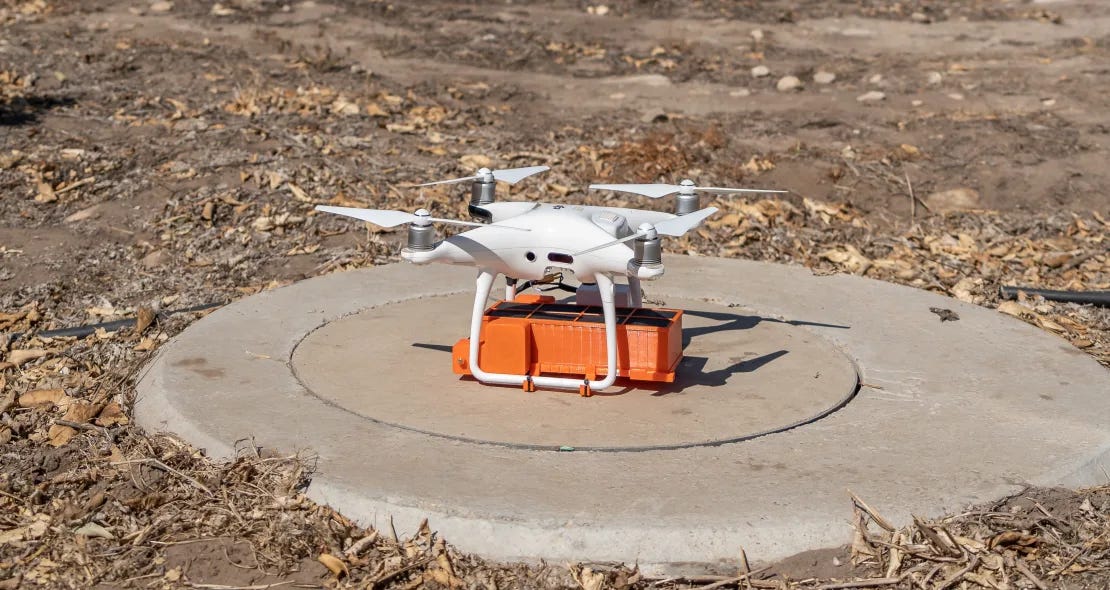High-Tech Allies: Drones and Parasitic Wasps Revolutionize Vineyard Pest Management
How can drones support a sustainable wine economy?
As the viticulture industry grapples with the challenges of sustainable farming and pest management, innovative technologies are emerging to offer new solutions. One such breakthrough comes from the Vergelegen Wine Estate in South Africa, where drones are being used to deploy parasitic wasps to combat mealybug infestations and the devastating leafroll virus they spread. This fusion of advanced drone technology with biological pest control not only represents a leap forward in vineyard management but also sets a precedent for environmentally friendly practices in winemaking.
The Menace of Mealybugs and Leafroll Virus
Mealybugs are small, sap-sucking insects that pose a significant threat to vineyards worldwide. They are notorious vectors of the grapevine leafroll-associated virus (GLRaV), which causes leafroll disease. This disease leads to reduced grape yield, delayed ripening, and diminished fruit quality, ultimately impacting wine production and profitability.
Traditional methods of controlling mealybugs often rely on chemical pesticides. However, these chemicals can harm beneficial insects, lead to pesticide resistance, and have negative environmental impacts. Moreover, consumers and regulatory bodies are increasingly pushing for reduced chemical usage in agriculture, making sustainable alternatives more attractive.
Drones: Precision Delivery Systems in Viticulture
Enter drone technology—a game-changer in precision agriculture. Drones have been increasingly utilized in vineyards for tasks such as aerial imaging, monitoring crop health, and even spraying applications. At Vergelegen, drones have taken on a new role: delivering tiny, parasitic wasps directly to the problem areas within the vineyard.
The drones used are equipped with GPS navigation and programmed flight paths that allow for precise distribution of the wasps. They can cover large areas quickly and efficiently, reducing labor costs and the time required compared to manual release methods.

Advantages of Drone Deployment
Precision Targeting: Drones can navigate the vineyard with pinpoint accuracy, ensuring that wasps are released exactly where they are needed.
Efficiency: A drone can cover up to 25 hectares in a single flight, significantly more than a person could manage on foot.
Reduced Labor Costs: Automation of the release process reduces the need for manual labor, which can be both costly and time-consuming.
Minimal Vineyard Disruption: The use of drones minimizes physical interference with the vines, reducing the risk of damage.
Parasitic Wasps: Nature's Pest Control Agents
The parasitic wasps, specifically species like Anagyrus pseudococci, are natural enemies of mealybugs. They lay their eggs inside the mealybugs, and the hatching larvae consume their hosts from the inside out, effectively reducing the mealybug population.
Benefits of Biological Control
Environmentally Friendly: Using natural predators eliminates the need for chemical pesticides, promoting a healthier ecosystem.
Selective Targeting: Parasitic wasps specifically target mealybugs, leaving beneficial insects unharmed.
Sustainability: Biological control agents can establish themselves in the environment, providing long-term pest management solutions.
Integrating Technology and Biology: A Sustainable Approach
The combination of drone technology and biological pest control represents a holistic approach to sustainable viticulture. By leveraging drones for the precise deployment of parasitic wasps, vineyards can effectively manage pests while minimizing environmental impact.
Case Study: Vergelegen Wine Estate
Vergelegen's adoption of this technology has yielded impressive results. According to their viticulturists, there has been a significant reduction in mealybug populations and a noticeable decline in leafroll virus incidence.
Reference: CNN Article on Vergelegen's Drone Wasps Initiative
The Technology Framework
Implementing such a system requires a combination of hardware and software tailored to vineyard conditions.
Drone Specifications
Payload Capacity: Must be sufficient to carry thousands of tiny wasps.
Flight Stability: Essential for accurate release.
Autonomous Navigation: GPS and obstacle avoidance systems to navigate complex vineyard terrains.
Software Integration
Mapping Software: To create precise flight paths over the vineyard blocks.
Release Mechanisms: Timed or sensor-triggered release systems to deploy wasps at designated locations.
Data Logging: Recording flight paths and release points for monitoring and analysis.
Overcoming Challenges
While the integration of drones and biological control is promising, there are challenges to consider:
Regulatory Compliance: Ensuring that drone operations meet aviation regulations, which can vary by country.
Initial Investment: The cost of drones and associated technology can be high, though it may be offset by long-term savings.
Technical Expertise: Requires training or hiring personnel skilled in drone operation and maintenance.
The Future of Pest Management in Viticulture
The success at Vergelegen demonstrates the potential for wider adoption of this technology in vineyards around the world. As drone technology becomes more accessible and affordable, and as environmental concerns drive the search for sustainable practices, integrating drones with biological control agents could become a standard in viticulture.
Broader Implications
Data Collection: Drones equipped with sensors can collect data on vine health, soil conditions, and pest populations, allowing for even more targeted interventions.
Automation: The use of drones is a step toward greater automation in vineyard management, which can improve efficiency and reduce human error.
Global Adoption: Vineyards in regions like California, Australia, and Europe are beginning to explore similar technologies, indicating a global trend.
The intersection of advanced drone technology and biological pest control offers an exciting avenue for sustainable viticulture. By adopting such innovative solutions, wine professionals can enhance vineyard health, reduce environmental impact, and improve the quality of their grapes and wines.
As the industry continues to evolve, embracing these technological advancements will be crucial for meeting the demands of modern agriculture and consumer expectations. The success story of Vergelegen Wine Estate serves as an inspiring example and a call to action for vineyards worldwide to explore and invest in such sustainable technologies.



